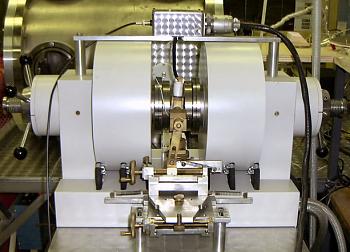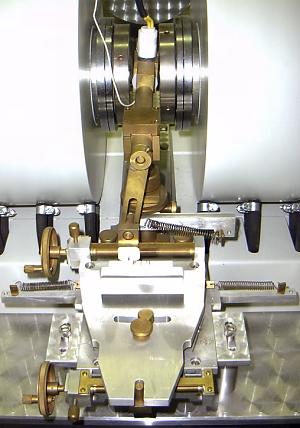![]()
![]()
![]()
“Millimetre-waves” are electromagnetic radiation with frequencies between 30 and 300 GHz (corresponding to wavelengths between 1 cm and 1 mm). This spectral range is enclosed by the so-called “microwaves” – which are centimetre-waves, actually – with frequencies from 3 to 30 GHz (corresponding to wavelengths from 10 cm to 1 cm) and the so-called “Terahertz” range which covers the submillimetre-wave region between 300 GHz and 3 THz (corresponding to wavelengths between 1 mm and 0.1mm):

|
In our lab, we use backward wave oscillator (BWO) tubes manufactured by ISTOK (Moscow region, Russia) for the generation of coherent radiation within the millimetre- and submillimetre-wave range. The BWOs constructed for this high-frequency region are highly advanced devices, and each of them covers a wide band of frequencies with substantial RF output power, as shown in the table on the right:
|
|
For the operation of these BWOs, electromagnets (solenoids) with sizable magnetic field strengths (typically 1 T which is about 20,000 times the strength of earth’s magnetic field) are required (see the left picture below).
A mechanically sophisticated positioning device is indispensable to facilitate the alignment of the tube in the solenoid with the necessary precision (see the right picture below).
Furthermore, an exceptionally stable high-voltage power supply is needed, as well as a stabilization circuit to lock the tube to the desired frequency.

|

|
In our lab, the BWO tubes are utilized in two different experimental setups:
- In a double resonance experiment we investigate intermolecular vibrations (bending and stretching of van der Waals bonds). Click the link below for further information about this technique.
- Currently, we are constructing a “terahertz spectrometer”, i. e. an absorption spectrometer that will allow us to measure rotational transitions in the above-mentioned (sub)mmw range. Click the link below for further information about this new spectrometer.
![]()
The Double Resonance Experiment The Terahertz Spectrometer
![]()
![]()